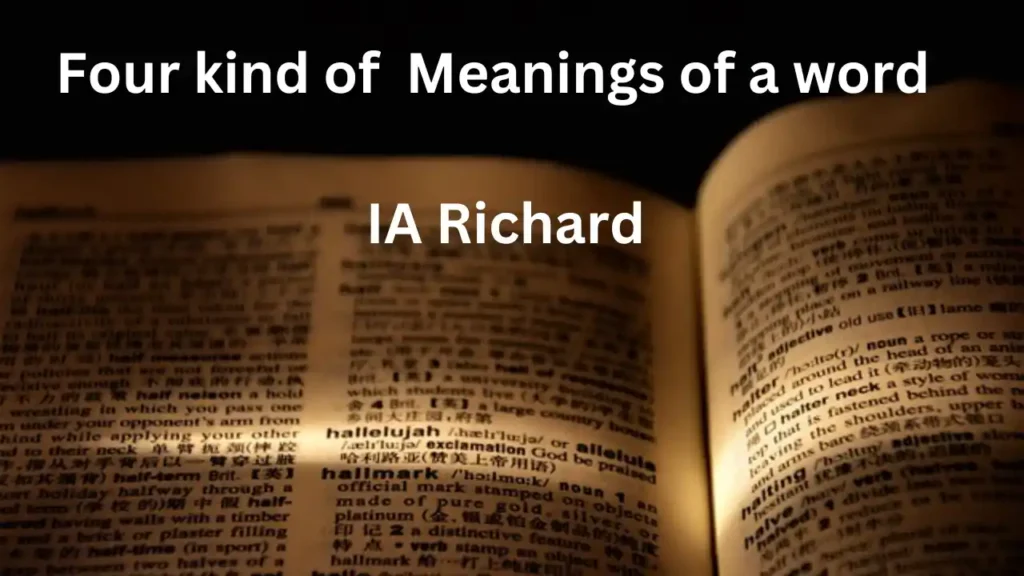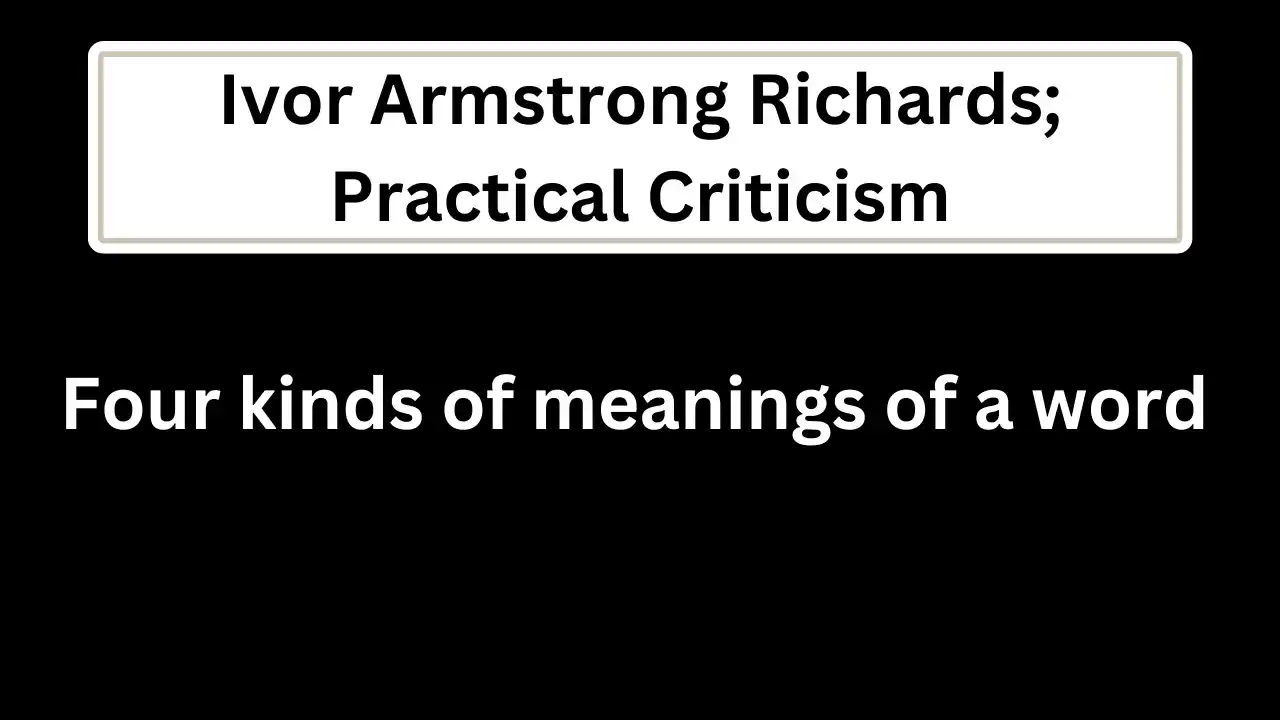A comprehensive guide for Richards; Practical Criticism
I.A. Richards, whose full name is Ivor Armstrong Richards, was a prominent figure in 20th-century literary criticism and rhetoric. Richards attended Cambridge University, where he studied at Magdalene College. He initially studied Classics but later shifted his focus to English literature. During his time at Cambridge, Richards was greatly influenced by the works of philosophers like Bertrand Russell and mathematician Alfred North Whitehead.
Notable works:
- “The Meaning of Meaning: A Study of the Influence of Language upon Thought and of the Science of Symbolism” (1923, co-authored with C.K. Ogden)
- “Principles of Literary Criticism” (1924)
- “Practical Criticism: A Study of Literary Judgment” (1929)
- “The Philosophy of Rhetoric” (1936)
- “Coleridge on Imagination” (1934)
“Practical Criticism: A Study of Literary Judgment” (1929)
“Practical Criticism” by I.A. Richards, published in 1929, changed literary analysis. Richards gave students poems without telling them anything about the authors. He wanted to see how they’d interpret the poems on their own. This showed that readers’ responses are important, not just what the author meant or when the poem was written. Richards called this “practical criticism,” a new way of studying literature that focuses on readers’ interpretations.
Some key points in Practical Criticism:
- Introducing practical criticism for literary analysis.
- Emphasizing close reading over external factors like authorial intent.
- Studying reader responses to texts through experiments.
- Presenting texts anonymously to remove biases.
- Examining diverse reader interpretations.
- Balancing subjective reader response with objective analysis.
- Challenging traditional literary criticism methods.
- Recognizing the active role of readers in interpreting texts.
- Practical applications in teaching and literary analysis.
Four kinds of meanings of a word:
In “Practical Criticism,” I.A. Richards delves into the significance of words and their multiple meanings in literary analysis. He emphasizes that words are not fixed entities with singular meanings but are rather dynamic and open to interpretation. Richards discusses how the connotations, associations, and cultural contexts surrounding words can greatly influence readers’ interpretations of a text. He illustrates this through examples where different readers may attribute different meanings to the same word based on their individual experiences and perspectives. He divided the meaning of the word into four parts.

Sense: Sense refers to the literal meaning or content of a text. It’s what the words directly say or describe.
For example, in the line “The sun was setting behind the mountains,” the sense is simply describing the position of the sun around the mountains.
Feeling: Feeling refers to the emotional or affective response that a text evokes in the reader. It’s about how the words make you feel.
For instance, consider the line “Her smile warmed his heart.” The feeling conveyed here might be one of warmth, happiness, or affection.
Tone: Tone refers to the attitude or mood conveyed by the author through their choice of words and language. It’s the emotional “flavor” of the text.
For example, a passage with a sarcastic tone might say, “Wow, thanks for your help,” but the words convey a sense of insincerity or mockery.
Intention: Intention refers to what the author aims to communicate or achieve through the text. It’s the purpose or goal behind the writing.
For instance, in a persuasive essay arguing for environmental conservation, the author’s intention might be to convince readers to take action to protect the environment.
Also read: Schools of Criticism; In English Literature
Conclusion
Ivor Armstrong Richards’s “Practical Criticism” transformed literary analysis by prioritizing reader interpretation. Through his exploration of words’ diverse meanings, Richards expanded our understanding of language’s complexity. By challenging conventional methods, he urged readers to engage actively with texts, leaving a profound impact on literary criticism. In essence, Richards’s work continues to inspire scholars to delve deeper into the nuances of language and interpretation in literature.
